Turtle Trackers
Students design research projects around turtle populations in Midwest
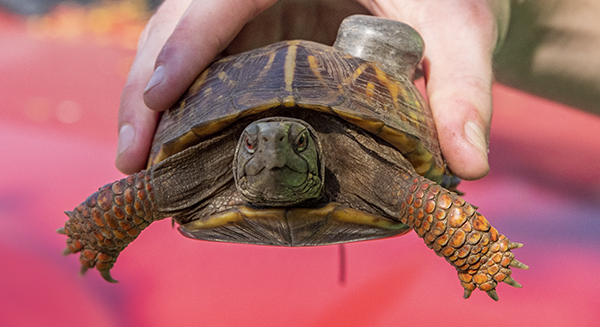
From The Ichabod - Winter 2021
After following a tree line for some time, the telemetry signal told biology major Becca Tolbert she would need to turn into a thick forest if she was going to find Lady of the Lake. Ben Reed, her professor and curator of this population of turtles about 30 miles from the Washburn University campus, didn’t hesitate. He goes where turtles go, and that can include a thorny forest, a sunbaked prairie, a patch of poison ivy or elbow-deep in a dark hole.
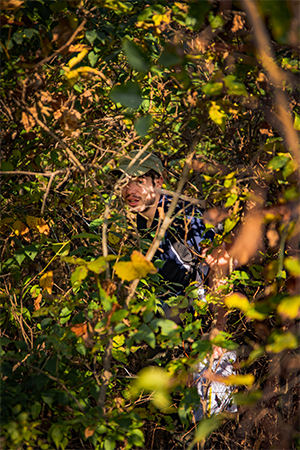 “She may be buried in here somewhere,” Reed said as he moved his hands across the ground trying not to disturb the terrain. “The problem is, I can’t get my Yagi in there.”
“She may be buried in here somewhere,” Reed said as he moved his hands across the ground trying not to disturb the terrain. “The problem is, I can’t get my Yagi in there.”
Like a submarine sonar technician, field biologists listen to a receiver and the faint changes in volume as they sweep the Yagi antenna around, walking in the direction that produces the loudest beeps like a game of hot or cold. On the shell of Lady of the Lake is a transmitter sending out those beeps.
Though the temperature reached 80 degrees that October day, the cold evenings and scarcity of food meant ornate box turtles were starting to slow their activity and bury themselves. Eventually, they go into brumation, a practice similar to hibernation to help cold-blooded animals survive the winter.
Tolbert and Reed took a GPS reading of where they believed Lady of the Lake was and moved on. Reed, an assistant professor in his third year at Washburn, began tracking turtles on this site when he started in 2018. They have found 80 turtles on the site and track about 35 of them.
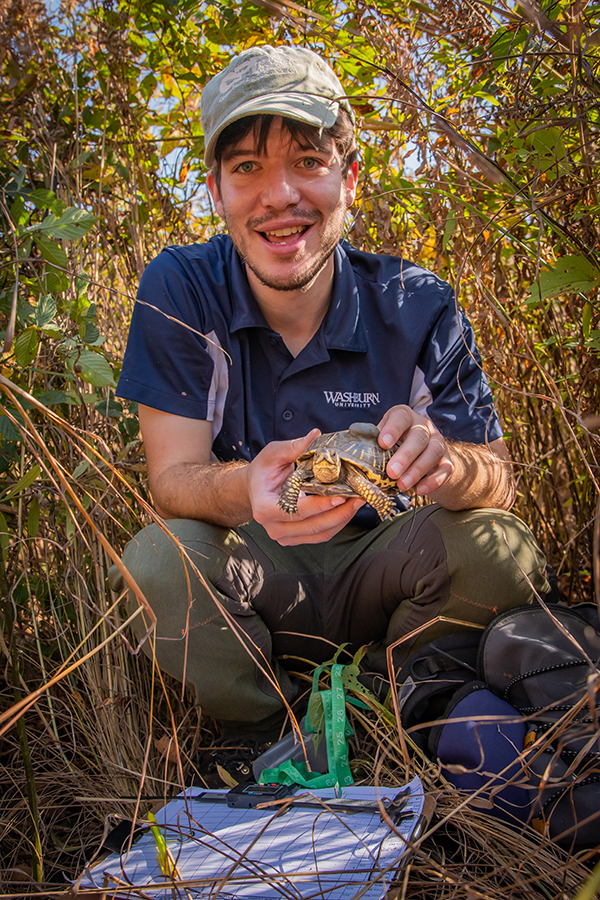 “The first year, I found three, and two of them were on the driveway,” he said. “Finding turtles is not easy. It's been three years of looking and searching pretty hard and getting the funds and the program set up for equipment and other stuff. It's been built from the ground up.”
“The first year, I found three, and two of them were on the driveway,” he said. “Finding turtles is not easy. It's been three years of looking and searching pretty hard and getting the funds and the program set up for equipment and other stuff. It's been built from the ground up.”
Reed and his students record the location, weight and size of each turtle they locate. They keep track throughout the year of when turtles become active in the spring, when they start brumation in the fall and how much they may move throughout a year. Washburn biology students are required to do independent research projects to graduate, so this lets them explore interests and hone important skills for their career or graduate school.
“Dr. Reed has fostered the environment so we can all work together as a team,” biology major Aubrey Gauntt said. “We all have common interests, and we all love animals, which is really great.”
Back at the property owners’ porch, biology major Steven Dennis is ready to conduct maze trials. Goldie was next up to try the maze. He explored everywhere but the last few feet of the path and failed to finish in the 10 minutes allowed.
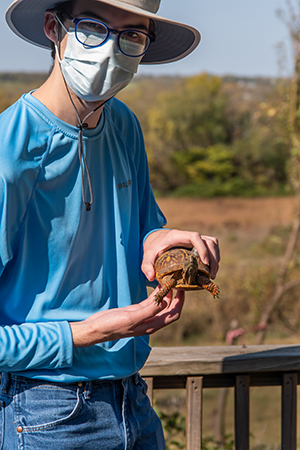 “There are several turtles we have seen that consistently make it to the end and show improvement,” Dennis said. “But there are also just as many turtles that stay at the start. This is a trial of memory, but it's also a trial of personality. Goldie tried to climb the walls several times, and that's something we can take note of.”
“There are several turtles we have seen that consistently make it to the end and show improvement,” Dennis said. “But there are also just as many turtles that stay at the start. This is a trial of memory, but it's also a trial of personality. Goldie tried to climb the walls several times, and that's something we can take note of.”
The students can share their data with others doing similar research.
“While my study focusses on spatial memory and its relationship to things like home range size, body condition and temperature, we can save this footage and we can use it for other things like a personality test,” said Dennis, who wants to work with aquatic animals in his career. “Maze trials are a very versatile method for studying behavior.”
Gauntt has been studying personality traits, and thanks to crowdfunding and Washburn Day of Giving, she spent six weeks this summer working with a population of turtles Reed built in western Nebraska. Her research deals with how risk averse or risk prone a turtle may be, or how exploratory, social or aggressive it may be.
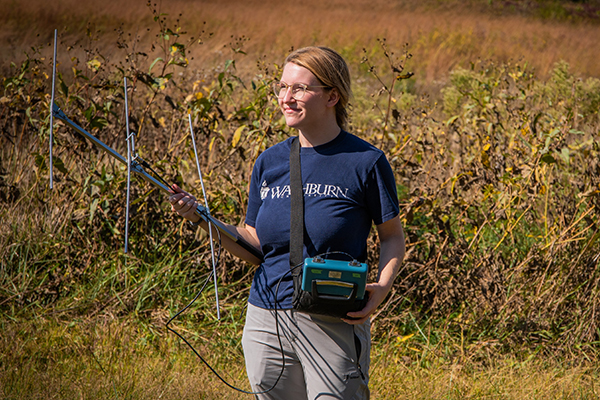
“As a team, we worked really well together, even without Dr. Reed there, because he had given us the tools we needed to succeed,” said Gaunnt, who wants to go into veterinary medicine. “Donors allow students like me to have these incredible opportunities I know are going to benefit research, animal management and ecological impacts.”
The family that owns this northeast Kansas site is onboard with the environmental benefits of the research, but the turtles don’t seem to respect property boundaries. Reed has built relationships with neighbors to allow students onto their land to track turtles.
Sustainability is the theme of WUmester this spring, a University-wide look at a timely and important worldwide topic. While most think of environmentalism when they hear sustainability, Reed said it’s so much more. It’s important to have sustainable practices, to keep research sites sustainable and to have sustainable relationships with landowners and partner institutions.
“Having this iconic species of the Midwest, it's not going to look good if our populations in Kansas go away because we're not doing practice that conserves them and manages them appropriately,” Reed said. “Box turtles are actually a really important component of an ecosystem. They can live 35 to 50 years, some up to 100. I'm hoping to track the same turtles for 35 or more years.”
The movements, habits and maze skills of Lady of the Lake and Goldie may be a part of academic research for many years to come.